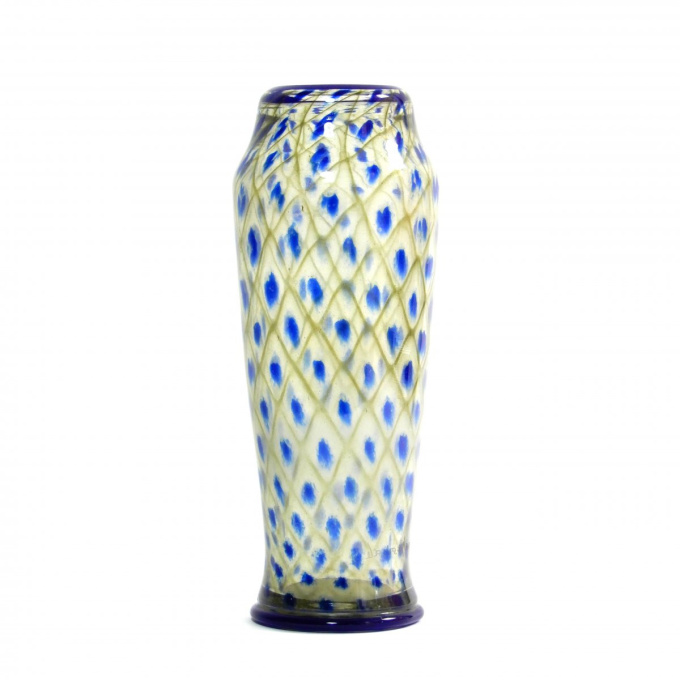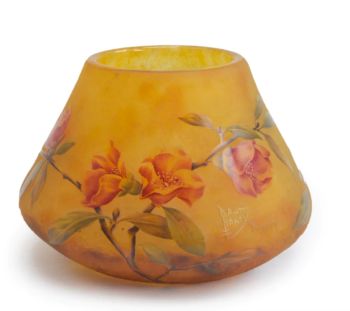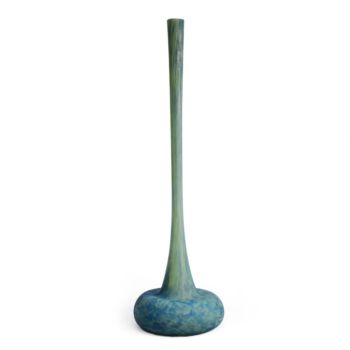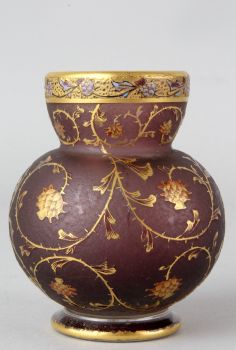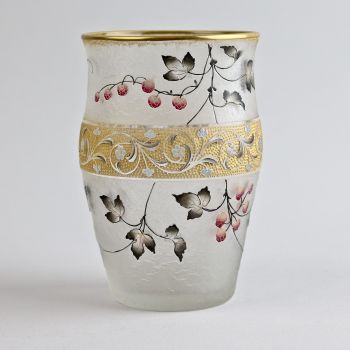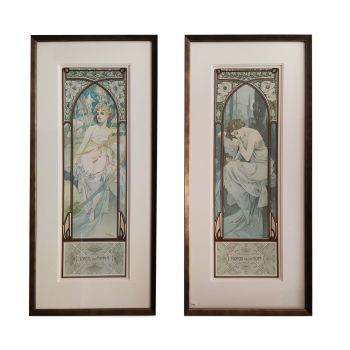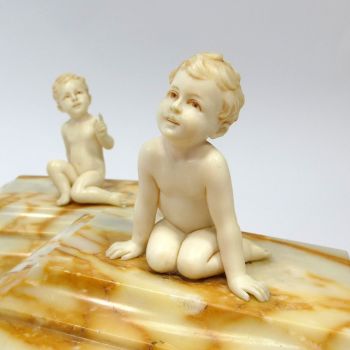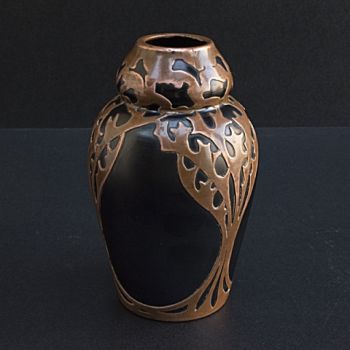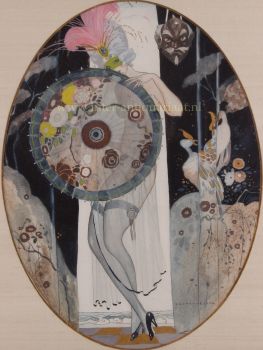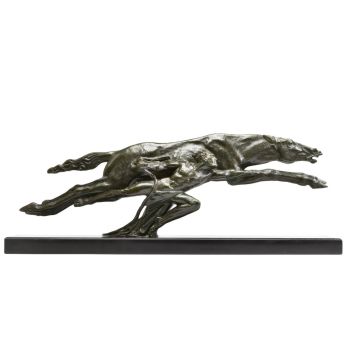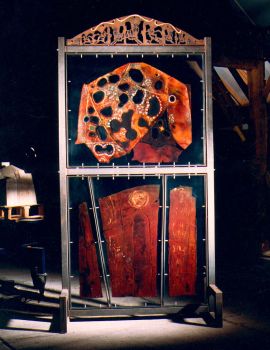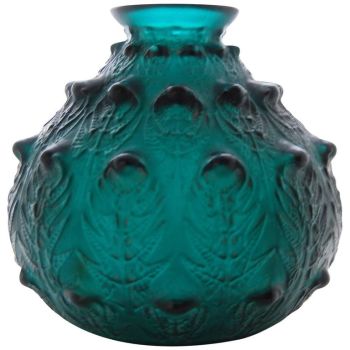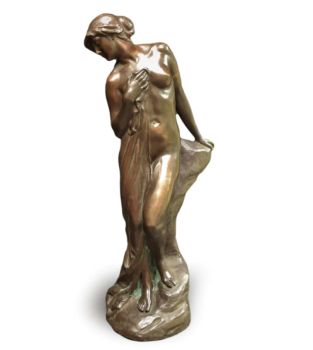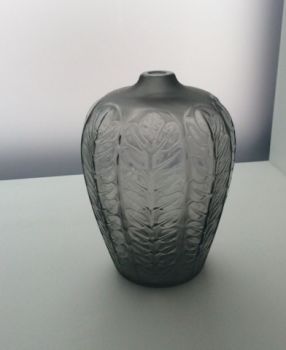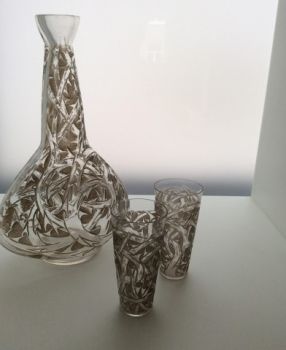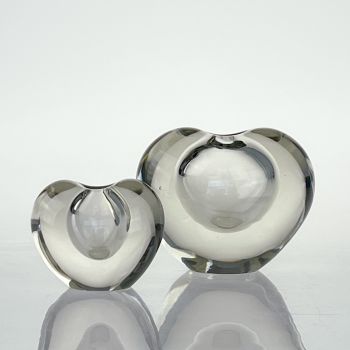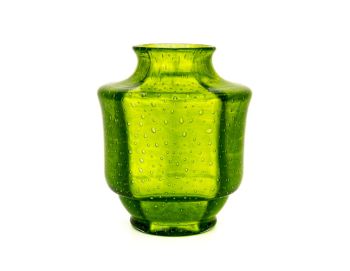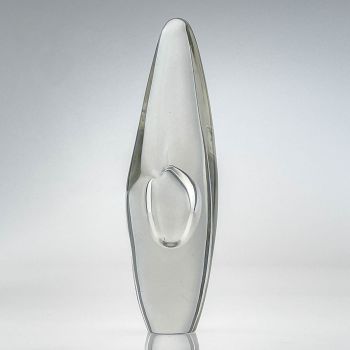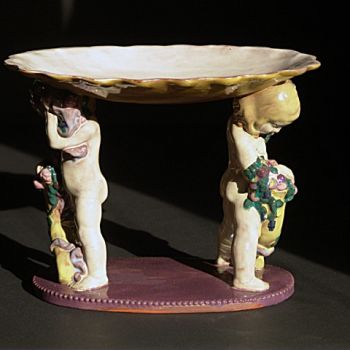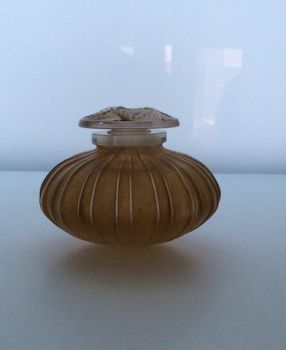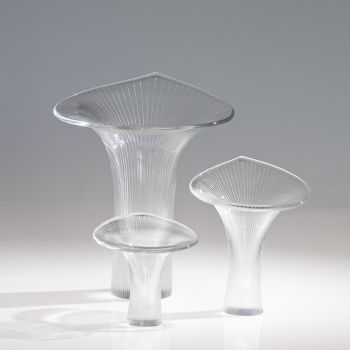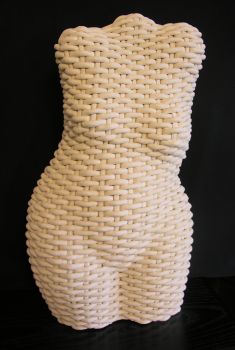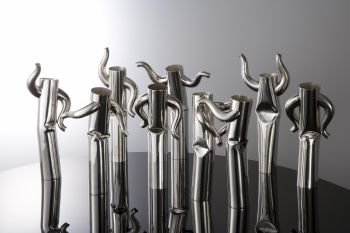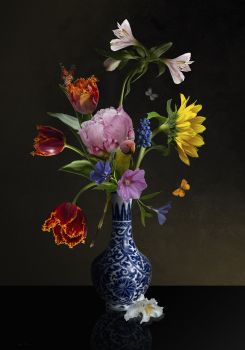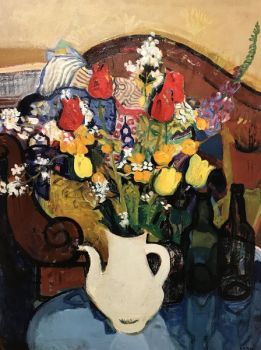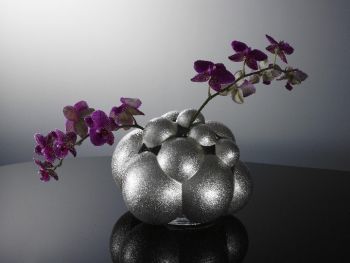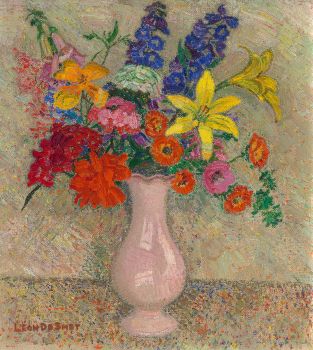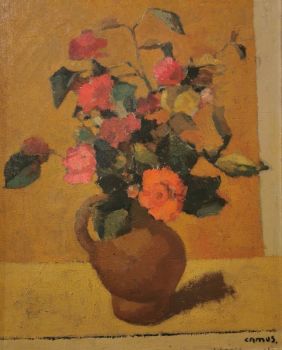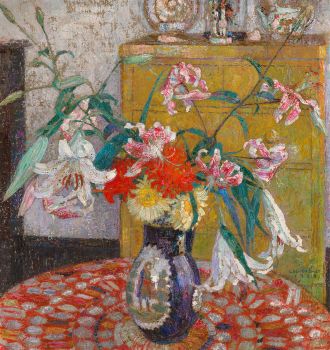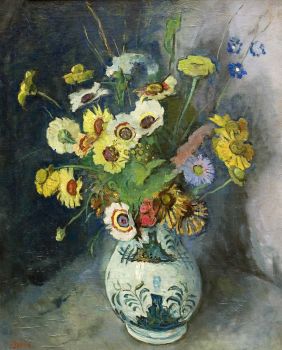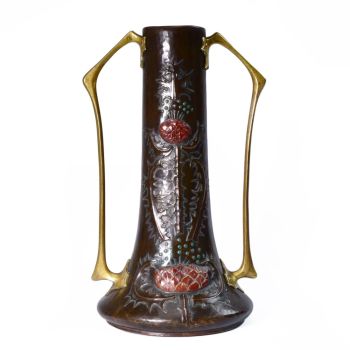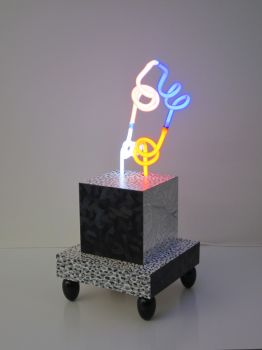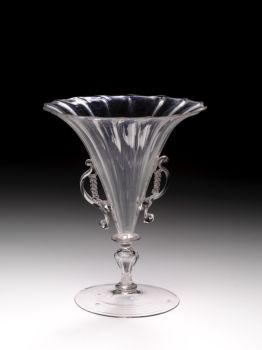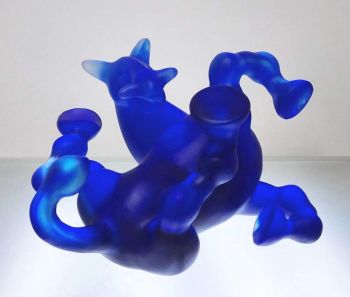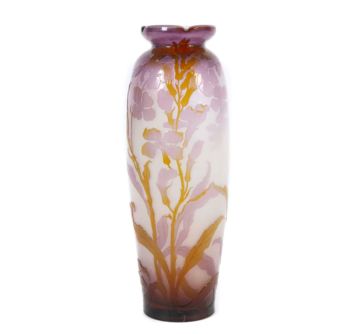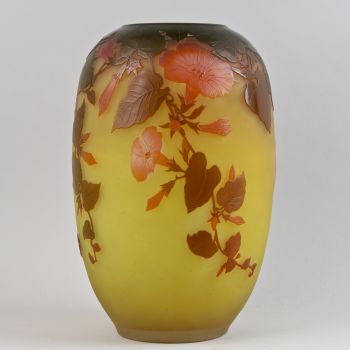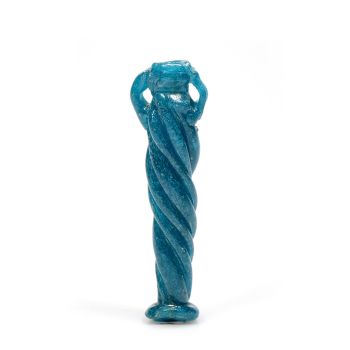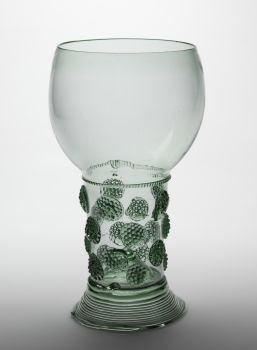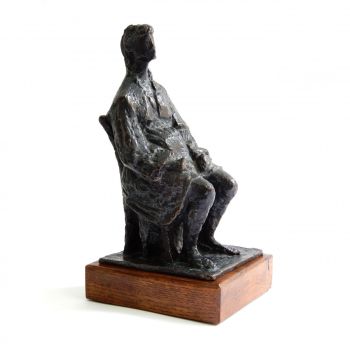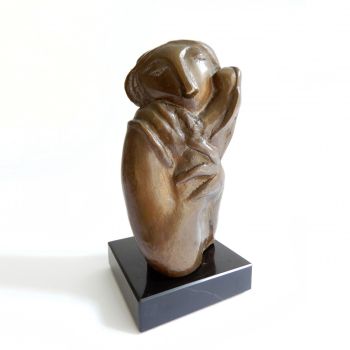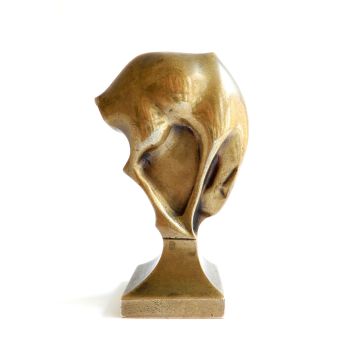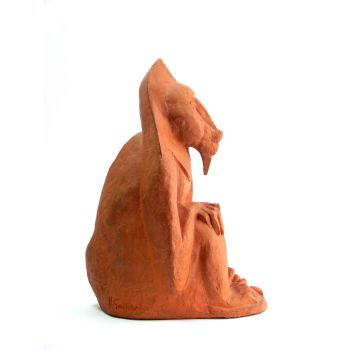Daum Vase "Décor de résille' 1919 - 1920
Frères Daum
Glass
25 cm, ø 8 cm
ConditionVery good
Price on request
Dille Art
- About the artwork
Tall vase by Daum Nancy with a fishnet decor, this vase with this decor was made between 1919 and 1923. The vase is mouth-blown of double-layered clear glass (cover glass), between the two layers the motif is applied in the colors green and blue with gold leaf. A blue border is applied to the neck and the foot. The signature is applied with the wheel, "Daum Nancy" and the Lorraine cross, the vase has a pontil mark on the bottom of the vase. In the Musée des Beaux-Arts in Nancy, there are 2 vases and a coupe with the same decor.
- About the artist
Daum is a crystal studio in the city of Nancy, France.
It was founded in 1878 by Jean Daum(1825–1885).
His sons, Auguste Daum (1853–1909) and Antonin Daum (1864–1931), oversaw its developing success during the burgeoning Art Nouveau period.
Currently Daum is the only commercial crystal manufacturer employing the pâte de verre (glass paste) process for art glass and crystal sculptures, a technique in which crushed glass is packed into a refractory mould and then fused in a kiln.
During the Universal Exhibition of 1900 Daum was awarded a ‘Grand Prix’ medal. Daum glass became more elaborate, acid etching (by Jacques Gruber) was often combined with carving, enamelling and engraving on a single piece of glass to produce creative glass master-pieces.
The most complicated creations also feature applied glass elements, such as handles and ornamental motifs in naturalistic forms. The Daum brothers quickly moved on to become one of the major forces in the Art Nouveau movement, seriously rivalling Gallé, so much so that when Émile Gallé died in 1904 they became the leaders in the field of decorative glass.
In 1906 Daum revived pâte de verre (glass paste), an ancient Egyptian method of glass casting, developing the method so that by the 1930s Daum's window panels used pâte de verre for richness instead of leaded or painted glass. Today Daum still used this method to produce their pieces.
Are you interested in buying this artwork?
Artwork details
Related artworks
Frères Daum
Daum Nancy – “Paysage Soleil Couchant” vase with two applied handles1900 - 1910
Price on requestAntiques Emporium
1 - 4 / 8René Lalique
A very rare deep green ‘Fougeres’ Vase designed by R. Lalique1912
€ 8.950Lennart Booij Fine Art and Rare Items
 Curated by
Curated bySilla Scheepens
1 - 4 / 24Unknown artist
Series of 6 Chinese cups and saucers (Yongzheng period)1722 - 1735
Price on requestKuipers Kunst & Antiek
Unknown artist
A rare filigrana a retortoli goblet1550 - 1600
Price on requestPeter Korf de Gidts - Antiquairs
1 - 4 / 24- 1 - 4 / 24
René Lalique
A very rare deep green ‘Fougeres’ Vase designed by R. Lalique1912
€ 8.950Lennart Booij Fine Art and Rare Items
 Curated by
Curated bySilla Scheepens
1 - 4 / 24- 1 - 4 / 12

